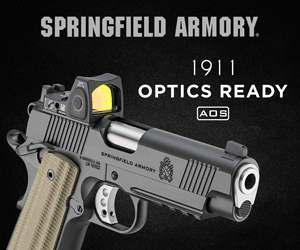Table of Contents
According to the National Shooting Sports Foundation, almost 5 million people bought their first gun in 2021. The state of our cities and the obsessive preoccupation of our government with gun control rather than crime control mean people are more and more on their own to protect themselves from criminals and crazies.
In a practical sense, that means there are a lot of people who are buying guns specifically for self-defense as opposed to a hobby or for shooting sports. People who may not know a lot about how guns work are often a bit bewildered by the many options in handguns and handgun actions. Experienced gun owners can recommend one type of action as being superior to the others, but in reality, they all have their pros and cons.
01
of 08
How a Semiautomatic Pistol Works
There are two different types of handguns: semiautomatic pistols and revolvers. When we use the term ‘action,’ we are talking about the trigger action. Because pistols are more common and more diverse than revolvers, I will focus on pistols first.
There are four primary types of trigger actions common to pistols, although the basic function of all pistols is similar. The stages of every pistol action include feeding, chambering, locking, firing, unlocking, extraction, ejecting, and cocking. The main difference across pistol actions is how the trigger works in conjunction with the rest of the action to fire the gun.
02
of 08
Types of Semiautomatic Pistol Trigger Actions
There are four main types of semiautomatic pistol trigger actions. Each has its advantages and disadvantages. Which you choose for your everyday carry or home defense gun is largely a matter of personal preference. One thing all modern pistols have in common, no matter what type of trigger action they use, is internal safeties. These are passive safeties that function without the operator taking any action. For example, all modern pistols have a drop safety that prevents the gun from accidentally firing if it is dropped. Other types of internal safeties include the firing pin block, hammer block, and transfer bar. All of these work inside a pistol to prevent it from going off unless the trigger is pulled.
03
of 08
Single Action (SA)
 Single action is probably the simplest type of trigger action. With it, the gun will not fire unless the hammer is back. The hammer can be locked back either by working or racking the slide or by manually pulling it back with your thumb. The slide makes contact with the hammer as it is pulled back, cocking it until a notch engages the sear and holds it in place. Pulling the trigger releases the sear, allowing the hammer to go forward and strike the firing pin. The gun cycles when it fires, moving the slide back and cocking the hammer for the next shot. Examples of this type of action are the Colt 1911 and the Browning Hi-Power.
Single action is probably the simplest type of trigger action. With it, the gun will not fire unless the hammer is back. The hammer can be locked back either by working or racking the slide or by manually pulling it back with your thumb. The slide makes contact with the hammer as it is pulled back, cocking it until a notch engages the sear and holds it in place. Pulling the trigger releases the sear, allowing the hammer to go forward and strike the firing pin. The gun cycles when it fires, moving the slide back and cocking the hammer for the next shot. Examples of this type of action are the Colt 1911 and the Browning Hi-Power.
Single-action semiautomatics rely on a manually operated safety that prevents the sear from moving when engaged. Some single-action pistols also have a grip safety that must be depressed by the hand holding the grip for the pistol to fire. Single-action semiautomatic pistols were designed to carry with a round in the chamber, the hammer cocked, and the manual safety on.
The main advantage of a single-action pistol is the trigger pull. It is light and smooth, which makes for improved accuracy, especially on follow-up shots. The primary disadvantage, if you want to think of it that way, is the necessity of a manual safety to be engaged to make the gun safe to carry when a round is in the chamber. Some people do not like having a manual safety because it is one more thing they must remember to do in the heat of the moment before they can deploy their gun for self-defense. On the other hand, a manual safety makes carrying the gun safer as it reduces the chances of a negligent discharge and is a prudent precaution for first-time gun owners.
Pros:
- Very light trigger pull
Cons:
- Hammer must be cocked for the gun to fire
- Hammer must be cocked again manually in the event of a misfire
- Manual safety must be engaged to carry the gun safely when a round is in the chamber
- Use of a manual safety could slow down deployment in a crisis
04
of 08
Double-Action Only (DAO)
 A DAO gun does not have an external hammer. The hammer is housed within the gun’s body and cannot be cocked manually. The trigger performs both the action of cocking the hammer and firing the pistol, and it can only be operated in that way. Hence, the name double-action only.
A DAO gun does not have an external hammer. The hammer is housed within the gun’s body and cannot be cocked manually. The trigger performs both the action of cocking the hammer and firing the pistol, and it can only be operated in that way. Hence, the name double-action only.
DAO triggers have a longer, heavier pull than other actions because the user first must compress the hammer spring before the trigger reaches the point at which it releases the hammer. This is considered a safety feature because the heavier trigger is harder to pull by accident, but it can take some getting used to as a shooter.
It also makes DAO popular for pocket pistols such as the Ruger LCP. An advantage of a DAO action is the fact that if the cartridge fails to fire, you can simply pull the trigger again to see if it will fire on a restrike. DAO pistols can be had with or without a manual safety.
Pros:
- Hammer does not need to be cocked to fire
- Trigger can be pulled again even if the cartridge fails to fire
- Trigger is more difficult to pull by accident
Cons:
- Trigger pull is consistently heavy
05
of 08
Double-Action/Single-Action (DA/SA)
 DA/SA pistols combine the best of both single-action and double-action handguns. They can be carried with the hammer back and the safety on like a single-action gun, or with a round in the chamber and the hammer down. That gives you the flexibility to carry and shoot the gun in the manner that fits your style the best.
DA/SA pistols combine the best of both single-action and double-action handguns. They can be carried with the hammer back and the safety on like a single-action gun, or with a round in the chamber and the hammer down. That gives you the flexibility to carry and shoot the gun in the manner that fits your style the best.
However, it is critical to always be aware of the condition in which you are carrying the gun. It could be catastrophic to think the gun is ready to shoot in DA by simply pulling the trigger, but find out the hard way that the safety is on, and you failed to disengage it before trying to defend yourself. For that reason, you must carry the gun in the same condition every time. Switching back and forth between conditions can be a formula for disaster.
DA/SA guns like the CZ75 and the Jericho 941 generally come with a manual safety. Some, such as the Beretta 92 series, also include a de-cocker that allows you to load a bullet into the chamber and then safely lower the hammer without pulling the trigger. This versatility enables you to carry the gun in either single-action, cocked with the safety on, or double-action with a round in the chamber and the hammer down. Again, if you choose to shoot it in double action for the first shot, you need to be ready for the much stiffer trigger pull.
Pros:
- Very light trigger pull when in single action
- Combines benefits of both DA and SA since it can be fired either way
- Has restrike capability in the event the bullet does not fire on the first pull
Cons:
- The first trigger pull on DA is heavy
- Important to be aware of the status in which you are carrying the gun
06
of 08
Striker Fired
 The most well-known striker-fired pistols are made by Glock. Although many consider the striker-fired pistol to be a newer innovation, the reality is that the striker-fired action is hardly new. The first striker-fired pistol produced in any quantity was the Hugo Borchardt C-93 pistol, built in 1883. Even better known is the FN 1910, invented by John Browning. But the gun that brought the striker-fired pistol into the mainstream was the Glock 17, designed by Gaston Glock and released in 1982. Its polymer frame and striker-fired action changed modern handguns forever.
The most well-known striker-fired pistols are made by Glock. Although many consider the striker-fired pistol to be a newer innovation, the reality is that the striker-fired action is hardly new. The first striker-fired pistol produced in any quantity was the Hugo Borchardt C-93 pistol, built in 1883. Even better known is the FN 1910, invented by John Browning. But the gun that brought the striker-fired pistol into the mainstream was the Glock 17, designed by Gaston Glock and released in 1982. Its polymer frame and striker-fired action changed modern handguns forever.
Striker-fired pistols use a striker rather than a hammer to drive the firing pin into the cartridge primer. An advantage of the action is that every trigger pull feels the same with a constant weight. In some ways, a striker-fired action can be thought of as a double-action since the action is not cocked until the trigger is pulled. Pulling the trigger completes the internal cocking of the gun and then releases the striker in one action. On the other hand, most striker-fired triggers are rarely as crisp as a single-action trigger.
Another advantage is exceptional reliability, which is always something important in a self-defense handgun. Initially, Glocks and many other striker-fired guns did not include a manual safety. Along with two internal safeties, Glocks and many other striker-fired guns have a separate lever built into the trigger that must be compressed by the trigger finger before the trigger will move. In recent years, however, more striker-fired guns have been available with a traditional manual safety. That means if you want a striker-fired gun but also want a manual safety, you can have it your way.
Pros:
- Each trigger pull feels the same
- Very reliable
- Can be dry-fired without harm to the gun
Cons:
- Trigger pull is seldom as crisp as other action types
- Not all brands of striker-fired guns have a manual safety
07
of 08
Revolvers
Before semiauto handguns became widely available, the number one choice for personal defense was the revolver. Revolvers come in two broad categories: signal-action and double-action. Single-action revolvers are the familiar Old West six guns of the 19th Century, like the Colt Single Action Army. They require the hammer to be manually cocked before each shot. Single-action revolvers, like single-action semiautos, have a very light and easy trigger pull.
Modern revolvers, like the Colt Python, are double-action. The hammer can be cocked manually for single-action shooting, but it can also be cocked by simply pulling the trigger. As with DA pistols, the double-action trigger pull is much stiffer than the same gun being fired single-action. Some revolvers, like the Ruger LCR, are DAO. They do not have an external hammer and can only be fired double action. The lack of a hammer streamlines the gun, making it easier to draw quickly from a pocket or other concealed location without concern of it getting caught on something.
Revolvers are not nearly as popular as semiautomatic pistols for personal defense. They are usually slower to fire and have a lower capacity than most pistols. It is estimated that there are around six times as many pistols in civilian hands in the United States as revolvers. Nevertheless, there are still many people who prefer to carry a revolver, especially if they want a small gun that can shoot a magnum load like the 357 Magnum.
Pros:
- Reliable
- Available in loads that pistols are not usually chambered for
Cons:
- Limited capacity
- Slower to shoot rapidly
- Some models are more difficult to conceal than a pistol
08
of 08
Conclusion
Your choice of a personal defense handgun is a matter of personal preference. Each type of action has its advantages and disadvantages, so the best course of action is to try them and decide for yourself which is best for you. The next step after that is to practice. A lot. The manual of arms for whatever type of handgun you choose to carry should become so familiar to you that it becomes muscle memory. Beginning shooters should decide on a type of EDC (everyday carry) gun and then stick to it. The heat of the moment is not the time to try to remember if you are using a gun with a manual safety engaged or not.
For example, I prefer to carry my EDC gun with no manual safety engaged, whether it has one or not. Striker-fired and DAO guns are carried with a round in the chamber and the safety off if it has one. If I am carrying or using a DA/SA gun, there is a round in the chamber, the hammer is down, and the safety is off. That way, the manual of arms is the same no matter what gun I have at hand. Present the gun and pull the trigger. There is no concern as to whether the safety is on or not since I do not use them.
But that is just me. Everyone must determine what suits them best and then practice and be consistent with how they carry it. As the saying goes, different strokes for different folks.










Just a couple of observations:
1) Add “Cons” with not having a manual safety (these negligent/accidental discharges have been reported by both civilian and well trained law enforcement users). While one should always maintain consistent holstering protocols, having and properly using a manual safety would reduce negligent discharges of this type.
1a) One must physically ensure there is nothing in the holster that could depress the trigger before and while holstering a handgun (e.g. keys on belt key-ring or long shirt tail that slipped down into holster or some other object that ended-up in the holster while gun was in use)
1b) One must physically ensure not to leave a finger (or a too long glove tip) within the handgun’s trigger guard while holstering as finger or glove tip could be pushed into and depress the trigger by the lip of a holster.
2) Author wrote, “There are two different types of handguns: semiautomatic pistols and revolvers.” Wouldn’t there be a separate category for a still modern handgun where one has to “break-open” the barrel(s) to load it, and once loaded the cartridges are fixed in place relative to the closed breech(es)? (e.g. the cartridges don’t move relative to the breech as they do in a magazine or revolving cylinder. A handgun like a derringer or one of the folding “credit-card” style folding handguns)
Thanks for your comment, jGecko.
Regarding not having a manual safety, you’re definitely right about the need for the proper safety procedures. They apply with or without a manual safety.
I didn’t include break-action handguns because there’s not a lot to explain in how the “action” works, although you are correct that there are a few deringers and folding guns that function that way. All told they make up a very small percentage of guns that are carried EDC and once loaded they function as a single action mechanism since you generally must manually cock the hammer before you can fire the gun.